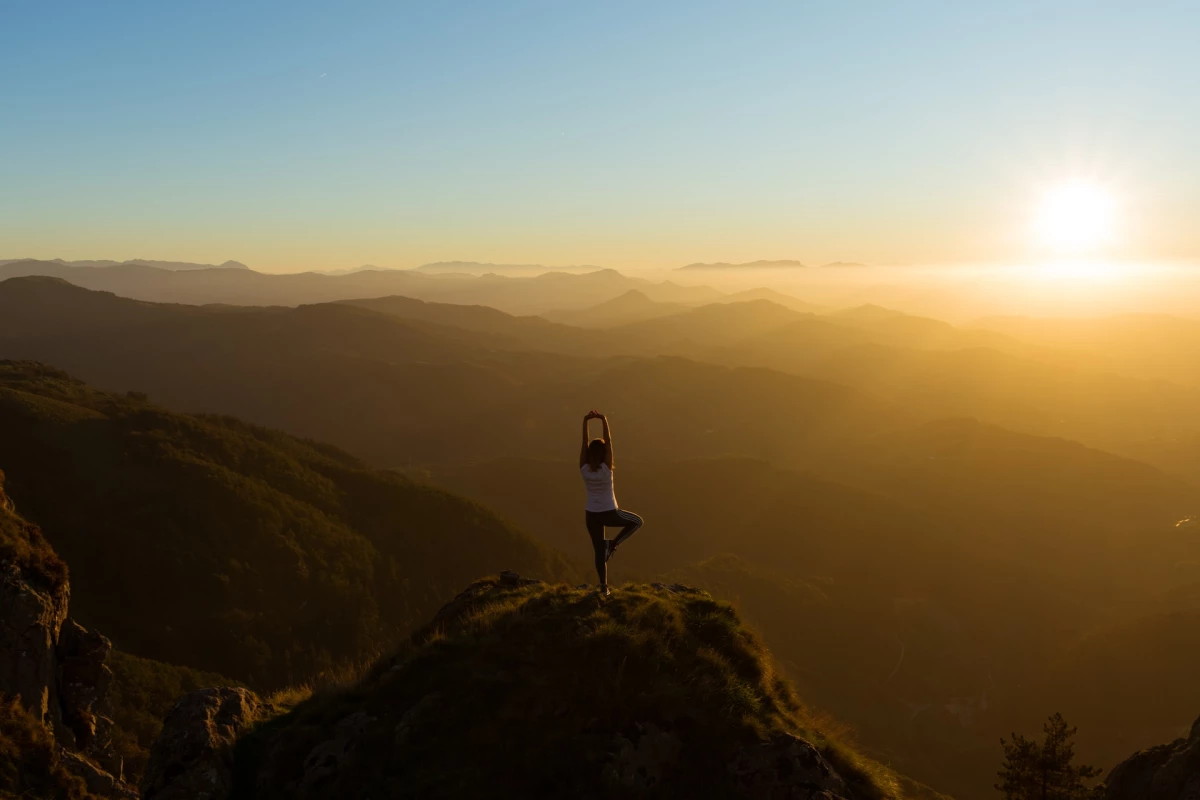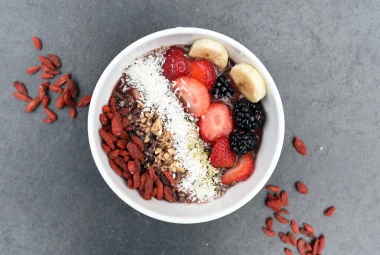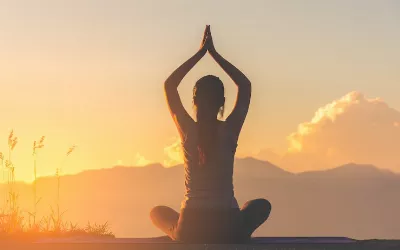The Ultimate Guide to Yoga: Finding Balance and Bliss
In a world that constantly bombards us with noise, distractions, and stress, finding inner balance and bliss becomes increasingly vital. Yoga, an ancient practice that dates back thousands of years, offers a timeless path to achieving just that. In this comprehensive guide, we will explore the art of yoga, its various forms, and how it can help you discover harmony, both physically and mentally.

Understanding Yoga:
Yoga And Its Origins:
Yoga, derived from the Sanskrit word "yuj," means union. At its essence, yoga seeks to unite the individual with the universal consciousness. Its origins can be traced to ancient India, where sages and mystics developed this practice as a means to attain spiritual enlightenment and harmony with the universe.
The earliest written records of yoga can be found in the sacred texts known as the Vedas, dating back over 5,000 years.
The Philosophy And Principles Of Yoga:
Yoga is built upon a comprehensive philosophical framework that guides its practice. At the heart of this philosophy are the eight limbs of yoga, as outlined by the sage Patanjali in his Yoga Sutras. These limbs serve as a roadmap for leading a purposeful and meaningful life:Yama (Ethical principles): These are moral guidelines that include principles like truthfulness, non-violence, and non-possessiveness, which form the foundation of a yogic lifestyle.
Niyama (Personal observances): These principles focus on self-discipline and self-study, encouraging practices such as cleanliness, contentment, and self-reflection.
Asana (Physical postures): The postures in yoga help cultivate physical strength, flexibility, and balance while promoting a healthy body.
Pranayama (Breath control): Pranayama techniques involve conscious control of the breath, which aids in regulating energy flow and calming the mind.
Pratyahara (Withdrawal of the senses): This limb teaches us to turn our attention inward, away from external distractions, and cultivate inner awareness.
Dharana (Concentration): Concentration techniques help focus the mind on a single point, preparing it for deeper meditation.
Dhyana (Meditation): Meditation is the practice of sustained concentration, leading to a state of profound inner stillness and self-realization.
Samadhi (Union with the divine): The ultimate goal of yoga is to achieve a state of complete absorption, where the practitioner experiences oneness with the universe.
The Mind-body Connection In Yoga:
Health Benefits of Yoga:
Improved Flexibility:
Yoga, with its flowing poses and stretches, is renowned for enhancing flexibility. Regular practice gradually lengthens and loosens muscles, increasing joint mobility. This newfound flexibility not only aids in daily activities but also reduces the risk of injuries and muscle strains. Whether you're reaching for something on a high shelf or bending to tie your shoelaces, improved flexibility gained through yoga can make these movements feel effortless and pain-free.
Stress Reduction:
One of yoga's standout benefits lies in its ability to combat stress. The combination of controlled breathing, meditation, and mindful movement creates a soothing environment for your mind. As stress levels drop, so does the production of cortisol, the body's primary stress hormone. This calming effect can lead to lower anxiety levels, improved mood, and a more focused and peaceful state of mind, helping you better navigate life's challenges.
Enhanced Strength:
While yoga may not involve lifting heavy weights, it's a formidable ally in building and toning muscles. The various poses engage different muscle groups, gradually increasing their strength and endurance. As you advance in your practice, you'll notice greater overall body strength, which not only improves your yoga performance but also empowers you to tackle everyday tasks with ease.
Better Posture:
Yoga promotes awareness of your body's alignment, which has a profound impact on posture. By practicing good posture during yoga poses, you train your body to maintain this alignment in daily life. As a result, you'll stand taller, with shoulders back and chest open. This improved posture not only exudes confidence but also reduces the risk of chronic back and neck pain associated with slouching or poor alignment.
Increased Balance:
Yoga often includes poses that challenge your balance and stability, such as tree pose or half-moon pose. These postures enhance proprioception—the body's awareness of its position in space—leading to improved balance. This benefit is particularly valuable as you age, as it helps prevent falls and injuries, promoting both physical safety and a sense of steadiness in your daily life.
Stress and Anxiety Management:
Yoga's emphasis on mindfulness and deep breathing makes it a powerful tool for managing stress and anxiety. The practice teaches you to stay present in the moment, redirecting your focus away from worries and racing thoughts. Over time, this mindfulness can reduce symptoms of anxiety and depression, promoting emotional well-being and resilience in the face of life's challenges.
Enhanced Cardiovascular Health:
Yoga, often seen as a gentle exercise, can have a profound impact on heart health. The relaxation techniques employed in yoga help lower blood pressure and reduce stress, which are crucial factors in maintaining a healthy heart. Over time, yoga can improve cardiovascular fitness, reduce the risk of heart disease, and enhance overall circulatory function, ensuring that your heart operates at its best.
Better Digestion:
Certain yoga poses and breathing exercises can stimulate digestion, making it an effective natural remedy for digestive issues. Twisting poses, for example, massage and wring out the digestive organs, helping to alleviate constipation and bloating. Additionally, the relaxation achieved through yoga can reduce stress-related digestive problems, promoting a healthier gut and overall digestive well-being.
Improved Sleep Quality:
Yoga's calming and stress-reducing effects extend to your sleep patterns. Regular practice can help you fall asleep faster, enjoy deeper and more restful sleep, and wake up feeling refreshed. The relaxation techniques and mindfulness learned in yoga translate into better sleep hygiene, making it easier to leave behind the worries of the day and embrace the serenity of a peaceful night's rest.
Weight Management:
Although yoga is not a high-intensity workout, it plays a crucial role in weight management. The mindfulness cultivated in yoga can lead to greater awareness of eating habits and food choices. As a result, many people find themselves making healthier dietary decisions, which, when combined with regular physical activity in yoga, contribute to weight maintenance and a healthier lifestyle overall.
Pain Relief:
Yoga is often recommended as a complementary therapy for managing chronic pain conditions such as arthritis, migraines, and lower back pain. The practice's emphasis on gentle movement and stretching helps reduce muscle tension and improve flexibility. This can alleviate the pain associated with these conditions, enhancing your overall quality of life and reducing the need for pain medication.
Immune System Support:
Yoga's relaxation response triggers a cascade of benefits, including enhanced immune system function. By reducing stress and promoting overall relaxation, yoga strengthens your body's ability to ward off illnesses. A robust immune system is better equipped to defend against infections, making regular yoga practice a valuable preventive measure for maintaining good health.
Enhanced Lung Capacity:
Pranayama, or yogic breathing exercises, form an integral part of yoga practice. These techniques focus on deep and controlled breathing, which can significantly increase lung capacity. Improved respiratory function enhances oxygen intake, leading to better overall health and vitality. Whether you're engaged in physical activities or simply seeking to breathe more easily, yoga's focus on breath can help you feel more alive and energized.
Hormonal Balance:
Yoga can have a positive impact on hormonal balance, particularly in women. By reducing stress-related hormonal fluctuations, it promotes overall well-being. Women experiencing menstrual irregularities or menopausal symptoms may find relief through the calming and balancing effects of yoga. This can lead to more stable hormonal cycles and a smoother transition through different life stages.
Increased Mind-Body Connection:
Yoga fosters a profound connection between your mind and body. Through regular practice, you'll gain a deeper understanding of your physical and emotional sensations. This heightened awareness allows you to better manage your emotions, respond to stress with greater resilience, and cultivate a sense of inner peace. As you strengthen this mind-body bond, you'll find yourself more in tune with your own needs and better equipped to navigate life's challenges with grace and equanimity.
Types of Yoga:
Hatha Yoga: The Foundation of All Yoga Styles
Hatha yoga is the cornerstone of all yoga styles, emphasizing physical postures (asanas) and breath control (pranayama). It's characterized by a gentle and deliberate pace, making it an excellent choice for beginners. Hatha focuses on alignment, balance, and mindfulness, with each pose held for a longer duration, allowing practitioners to explore their body's limits and discover inner stillness.
Vinyasa Yoga: The Flowing Dance of Breath and Movement
Vinyasa yoga synchronizes breath with a continuous flow of dynamic poses. This style is known for its creativity and adaptability, making each class unique. It's physically demanding, building strength, flexibility, and endurance, while the emphasis on breath provides a meditative quality, creating a moving meditation that harmonizes body and mind.
Ashtanga Yoga: The Eight-Limbed Path to Mastery
Ashtanga yoga is a structured and challenging practice that follows a specific series of postures, each linked with precise breath counts. This style cultivates discipline and consistency, focusing on breath control (ujjayi pranayama), drishti (gazing points), and bandhas (energy locks). Ashtanga is ideal for those seeking a rigorous and disciplined practice that fosters physical and mental stamina.
Bikram Yoga: The Hot Yoga Experience
Bikram yoga is practiced in a room heated to high temperatures to enhance flexibility and detoxification. The class consists of a fixed sequence of 26 postures and two breathing exercises. The heat can intensify the experience, making it suitable for those who thrive in a heated environment and enjoy a consistent, challenging practice.
Kundalini Yoga: Awakening the Inner Energy
Kundalini yoga aims to awaken dormant energy at the base of the spine and guide it upwards through the chakras. This practice combines physical postures, breathwork, chanting, and meditation. Kundalini is ideal for those interested in exploring the spiritual and transformative aspects of yoga, connecting with their inner self, and experiencing a profound inner awakening.
Iyengar Yoga: Precision and Alignment
Iyengar yoga places a strong emphasis on precise alignment and the use of props like belts and blocks to assist in postures. It's a methodical, detail-oriented practice that enhances stability, balance, and therapeutic benefits. This style is perfect for individuals recovering from injuries or those who appreciate a systematic approach to yoga.
Yin Yoga: The Art of Surrender
Yin yoga involves holding passive postures for extended periods, targeting the deep connective tissues. It promotes relaxation, flexibility, and a meditative mindset. Yin is perfect for those seeking a slow-paced, introspective practice, and it offers relief from chronic tension and stress, allowing you to surrender deeply into each pose.
Getting Started with Yoga:
Tips for Beginners
- Start Slowly: As a beginner, it's crucial to begin your yoga journey at a comfortable pace. Yoga is not a competitive sport, and there's no rush to master advanced poses. Begin with basic asanas (poses) and gradually progress as you gain confidence and flexibility.
- Listen to Your Body: Paying attention to how your body feels during each pose is essential. If you experience any pain or discomfort, ease out of the pose and consider trying a modified version or seeking guidance from a certified instructor.
- Consistency is Key: Establishing a regular practice routine is vital to experiencing the full benefits of yoga. Even a short daily practice can yield significant physical and mental improvements over time.
- Breathing is Vital: One of the fundamental aspects of yoga is breath control, known as pranayama. Practice deep, mindful breathing throughout your session. Sync your breath with your movements to enhance focus and relaxation.
- Set Realistic Goals: While it's natural to aspire to master advanced poses, it's essential to set achievable goals. Celebrate your progress along the way, and remember that yoga is a journey of self-discovery, not a destination.
Finding a Suitable Class or Instructor
- Research Studios and Instructors: Take the time to research local yoga studios or online classes. Read reviews and gather recommendations from friends or online communities. Look for instructors who have appropriate certifications and experience.
- Attend a Beginner's Class: Many studios offer beginner-specific classes, often referred to as "Yoga for Beginners" or "Foundations of Yoga." These classes are designed to introduce you to the basics and provide a supportive environment for learning.
- Instructor Compatibility: Finding an instructor whose teaching style resonates with you is crucial. Attend trial classes or watch online videos to get a sense of their approach. A good instructor can make a significant difference in your practice journey.
- Online Options: If in-person classes aren't accessible, explore reputable online platforms with qualified instructors. Many online yoga classes offer various levels, including beginner-friendly options.
Essential Yoga Equipment and Attire
- Yoga Mat: Your yoga mat is your foundation. Invest in a quality mat that provides both grip and cushioning. This will enhance your stability during poses and provide comfort for your joints.
- Comfortable Clothing: Wear clothing that allows for unrestricted movement. Look for stretchy, breathable materials that wick away sweat. Yoga-specific attire is ideal, but comfortable workout gear works too.
- Props: Props like yoga blocks, straps, and bolsters can assist you in achieving proper alignment and deepen your stretches. They are especially helpful for beginners as they provide support during challenging poses.
- Water Bottle: Stay hydrated throughout your practice. Having a reusable water bottle nearby is essential to replenish fluids as you sweat and move through your yoga session.
Simple Poses for Beginners
1.Mountain Pose (Tadasana):
- Stand tall with your feet hip-width apart, distributing your weight evenly.
- Engage your core, relax your shoulders, and extend your arms down by your sides.
- Gaze softly ahead and breathe deeply.
2.Child's Pose (Balasana):
- Kneel on the mat with your big toes touching and knees hip-width apart.
- Sit back on your heels and stretch your arms forward, lowering your forehead to the mat.
- Relax and breathe deeply, feeling the gentle stretch along your spine.
3.Downward-Facing Dog (Adho Mukha Svanasana):
- Start in a push-up position with your hands shoulder-width apart and feet hip-width apart.
- Lift your hips up and back, forming an inverted "V" shape with your body.
- Press your palms into the mat, relax your head, and push your heels towards the floor.
4.Cat-Cow Pose (Marjaryasana-Bitilasana):
- Begin on your hands and knees, aligning your wrists under your shoulders and knees under your hips.
- Inhale as you arch your back, lift your tailbone, and lift your head and chest (Cow Pose).
- Exhale as you round your back, tuck your chin, and draw your belly button towards your spine (Cat Pose).
Yoga and Mindfulness:
The Symbiotic Dance of Yoga and Mindfulness
Yoga and mindfulness are like two dancers performing an intricate duet. Each complements the other's movements, creating a harmonious rhythm that resonates throughout the body and mind. Yoga, originating in ancient India, is a physical, mental, and spiritual practice that aims to unite the individual with the divine. It encompasses various postures (asanas), breathing exercises (pranayama), and meditation techniques that promote physical strength, flexibility, mental clarity, and spiritual awakening.
Mindfulness, on the other hand, traces its roots to Buddhist meditation practices and centers on cultivating awareness and presence in the moment. It teaches us to observe our thoughts, emotions, and sensations without judgment, fostering a deep connection with our inner selves and the world around us.
The Integration of Meditation and Breathing in Yoga
Meditation and controlled breathing are fundamental components of yoga that bridge the gap between physical postures and mental tranquility. In yoga, meditation is often practiced in conjunction with asanas to heighten focus and inner awareness. This union transforms yoga from a mere physical exercise into a holistic practice that nurtures the mind, body, and soul.
Pranayama, the science of breath control, plays a pivotal role in this integration. By mastering various breathing techniques in yoga, such as Ujjayi, Kapalabhati, and Nadi Shodhana, practitioners learn to regulate their breath, calm the mind, and balance their energy. This synchrony between breath and movement enhances mindfulness, enabling individuals to stay present during their practice, free from distractions.
Incorporating Mindfulness into Daily Life through Yoga
Yoga extends beyond the confines of a yoga mat. It provides a practical framework for weaving mindfulness into your daily life. Here are some actionable steps to help you cultivate mindfulness through yoga:
- Start Your Day Mindfully: Begin your day with a few minutes of deep breathing and gentle stretches. Set an intention for the day, fostering a positive and focused mindset.
- Practice Gratitude: During your yoga sessions, take a moment to express gratitude for your body's abilities and the opportunity to practice. Gratitude deepens mindfulness and shifts your perspective toward positivity.
- Mindful Movement: Pay attention to the sensations in your body as you move through yoga poses. Notice the stretch, tension, and release. This awareness anchors you in the present moment.
- Breathe with Intention: Throughout your day, practice conscious breathing. Inhale deeply, exhale fully, and center yourself, especially during stressful moments.
- Reflect and Journal: After your yoga sessions, take a few minutes to journal your thoughts and feelings. Reflect on any insights or revelations that arise during your practice.
- Extend Mindfulness Beyond Yoga: Carry the mindfulness cultivated in yoga into your daily activities—eating, walking, working, and interacting with others.
Yoga and Nutrition:
1.The Synergy of Yoga and Balanced Nutrition:
Yoga is not just about striking poses on a mat; it's a profound journey of self-discovery and healing. A well-balanced diet acts as the foundation upon which your yoga practice can flourish. Here's how:
- Energy and Endurance: Nutrient-dense foods supply the essential fuel needed for demanding yoga sessions. Carbohydrates, proteins, and fats are like the three pillars supporting your practice. Carbs provide quick energy, proteins repair and build muscle, while fats sustain long-lasting endurance.
- Mind-Body Connection: Yoga fosters a deep connection between your mind and body. Similarly, nourishing your body with wholesome foods enhances this connection. Nutrients like omega-3 fatty acids found in fish or flax seeds can improve cognitive function and emotional balance, aligning perfectly with yoga's mental focus.
- Digestive Health: Yoga encourages the gentle massaging of internal organs through various postures, aiding digestion. A diet rich in fiber, fruits, and vegetables complements this by promoting healthy digestion, preventing discomfort during practice.
2.Ayurveda and its Union with Yoga:
Ayurveda, the ancient Indian science of life, is intrinsically linked with yoga. Both share a common root and philosophy centered on balance, harmony, and well-being. Ayurveda recognizes that individuals possess unique constitutions or "doshas" (Vata, Pitta, Kapha) and prescribes personalized diets and lifestyles accordingly. This aligns seamlessly with yoga's principle of honoring individual differences.
- Dosha-Balancing Yoga: Depending on your dominant dosha, specific yoga practices and dietary recommendations can be tailored to restore balance. For instance, Vata types may benefit from grounding yoga poses and warm, nourishing foods, while Pitta individuals can seek cooling asanas and foods to pacify excess heat.
- Prana and Food: Both yoga and Ayurveda emphasize the concept of prana, or life force energy. Foods are categorized as either prana-rich (fresh fruits, vegetables) or devoid of prana (processed, stale foods). Aligning your diet with prana-rich choices enhances vitality, supporting your yoga journey.
3.Dietary Tips for Yogis:
To optimize energy levels and overall health as a yogi, consider these dietary tips:
- Hydration: Begin your day with warm water and lemon to detoxify and hydrate. Adequate hydration is essential for flexibility and toxin removal during yoga.
- Moderation: Practice mindful eating, savoring each bite. Overeating can lead to discomfort during yoga, while under-eating may leave you drained.
- Timing: Consume your meals at least 2-3 hours before yoga practice to avoid discomfort. Post-practice, refuel with a balanced meal or snack within an hour.
- Whole Foods: Prioritize whole grains, lean proteins, and plenty of fruits and vegetables. These provide sustained energy and vital nutrients.
- Herbal Teas: Incorporate herbal teas like ginger or chamomile for digestion or calming effects, respectively.
Yoga and Stress Management:
How Yoga Helps Manage Stress:
1.Mind-Body Connection:
Yoga is not just a physical exercise; it's a holistic practice that combines physical postures (asanas), breathing techniques (pranayama), and mindfulness. This mind-body connection is instrumental in reducing stress. Yoga encourages you to be fully present in the moment, leaving behind worries about the past and future.
2.Cortisol Reduction:
Regular yoga practice has been shown to lower cortisol levels, the hormone associated with stress. Asanas and pranayama techniques activate the parasympathetic nervous system, also known as the "rest and digest" response, which counteracts the "fight or flight" stress response.
3.Enhanced Relaxation Response:
Yoga trains your body to respond more efficiently to stressors. Through deep breathing and meditation, you develop a heightened relaxation response, making you more resilient to life's challenges.
Relaxation Techniques and Stress-Reducing Poses:
1.Deep Breathing (Pranayama):
The simplest yet most effective relaxation technique in yoga is deep breathing. Try the "4-7-8" technique: Inhale for 4 counts, hold for 7 counts, and exhale for 8 counts. Repeat this several times to instantly calm your mind.
2.Child's Pose (Balasana):
This gentle pose allows you to surrender and release tension in your back, shoulders, and neck. As you fold forward, focus on your breath and let go of stress.
3.Corpse Pose (Savasana):
Lie flat on your back, arms by your sides, and legs relaxed. Close your eyes and let go of all muscular tension. This pose is perfect for deep relaxation and stress relief.
4.Cat-Cow Pose (Marjaryasana-Bitilasana):
This flowing movement between arching and rounding your back helps release tension in the spine and promotes flexibility, reducing physical stress.
Yoga Lifestyle:
The Ethical Compass of Yoga:
At the core of yoga philosophy lie the Yamas and Niyamas, ethical principles that serve as a moral compass for yogis. These principles guide individuals towards a life of inner and outer harmony.
1.Ahimsa (Non-violence):
Ahimsa teaches us to practice compassion and avoid causing harm, not only to others but also to ourselves. By cultivating kindness, we create a harmonious environment for personal growth.
2.Satya (Truthfulness):
Satya encourages honesty and authenticity. Living in truth helps us build meaningful connections, fostering a life of genuine happiness.
3.Asteya (Non-stealing):
Asteya goes beyond material possessions; it's about not taking away someone's time, energy, or opportunities. By respecting others' boundaries, we sow the seeds of trust and abundance.
4.Brahmacharya (Moderation):
Brahmacharya invites us to find balance and moderation in all aspects of life, including our desires. This principle reminds us that excess often leads to imbalance and suffering.
5.Aparigraha (Non-possessiveness):
Aparigraha encourages detachment from material possessions and desires, freeing us from the burden of materialism and allowing space for spiritual growth.
The Niyamas, on the other hand, guide us in our personal development:
1.Saucha (Purity):
Saucha teaches us to purify our mind, body, and surroundings. By maintaining cleanliness, we create an environment conducive to spiritual growth.
2.Santosha (Contentment):
Santosha encourages us to find contentment in the present moment, appreciating what we have rather than constantly craving more.
3.Tapas (Self-discipline):
Tapas is about cultivating self-discipline and resilience, essential for achieving our goals on and off the mat.
4.Svadhyaya (Self-study):
Svadhyaya invites us to explore our inner selves through self-reflection, meditation, and the study of sacred texts.
5.Ishvara Pranidhana (Surrender to a Higher Power):
Ishvara Pranidhana teaches us to let go of our ego and surrender to a higher power, finding peace in acceptance and trust.
The Compassion of Vegetarianism
One of the most profound ways yogis extend their practice beyond the mat is through their dietary choices. Vegetarianism aligns with the yogic principle of Ahimsa (non-violence), as it promotes compassion towards all living beings. By abstaining from meat and embracing a plant-based diet, yogis not only reduce harm to animals but also experience physical and spiritual benefits. Such a diet fosters inner purity, enhances energy levels, and supports a harmonious connection with nature.
The Liberation of Minimalism
Minimalism is not just a design aesthetic; it's a way of life that resonates deeply with yogic philosophy. Minimalism encourages us to declutter our physical and mental spaces, freeing ourselves from the burdens of excess. By simplifying our lives, we create room for mindfulness, self-reflection, and spiritual growth. Minimalism teaches us that true wealth lies not in possessions but in the richness of experience and inner peace.
Embracing Yoga as a Holistic Way of Life
In conclusion, yoga is not limited to the confines of a yoga mat or studio. It is a profound philosophy that extends into every facet of our lives. By adhering to the ethical principles of Yamas and Niyamas, embracing vegetarianism, and adopting minimalism, we can truly embrace yoga as a holistic way of life. Through these practices, we find not only physical health but also mental clarity, emotional balance, and spiritual enlightenment. As you embark on this transformative journey, remember that yoga is not just something you do; it becomes a part of who you are, guiding you towards a life filled with purpose, compassion, and serenity.
FAQs:
1. What is yoga, and what are its benefits?
Yoga is a holistic practice that combines physical postures, breathing exercises, meditation, and mindfulness to promote overall well-being. Its benefits include increased flexibility, improved strength, stress reduction, enhanced mental clarity, and a sense of inner peace.
2. Can anyone practice yoga, regardless of age or fitness level?
Absolutely! Yoga is adaptable to all ages and fitness levels. There are various styles and modifications to suit individual needs, making it accessible to everyone.
3. Do I need to be flexible to do yoga?
No, flexibility is not a prerequisite for yoga. Yoga actually helps improve flexibility over time. Start where you are, and with consistent practice, you'll notice positive changes in your flexibility.
4. What should I wear to a yoga class?
Wear comfortable, breathable clothing that allows for movement. Avoid clothing that's too loose or restrictive. Most importantly, wear what makes you feel confident and relaxed.
5. How often should I practice yoga for noticeable results?
Consistency matters more than frequency. Aim for at least 2-3 sessions per week to experience positive changes in your body and mind. Gradually, you can increase the frequency as you feel comfortable.
6. Can yoga help with stress and anxiety?
Yes, yoga is renowned for its stress-reducing benefits. Regular practice helps calm the mind, lower stress hormone levels, and promote relaxation, which can alleviate anxiety.
7. Is yoga a religion or spiritual practice?
Yoga itself is not a religion. It is a spiritual and philosophical practice that can be incorporated into various belief systems or followed as a secular practice to promote physical and mental well-being.
8. What's the difference between yoga and meditation?
Yoga encompasses physical postures, breathing exercises, and meditation. Meditation is one aspect of yoga that focuses on stilling the mind and finding inner peace. They complement each other but can also be practiced separately.
9. Can yoga help with weight loss?
Yoga can aid weight loss indirectly by promoting mindfulness, reducing stress-related eating, and improving overall fitness. While it may not burn as many calories as some other exercises, it plays a valuable role in a balanced weight loss program.
10. How do I choose the right yoga style for me?
The right style depends on your goals and preferences. Hatha yoga is great for beginners, while Vinyasa offers a more dynamic practice. Explore different styles to find the one that resonates with you.
Bottom line:
In conclusion, The Ultimate Guide to Yoga: Finding Balance and Bliss is your roadmap to a harmonious and joyful life through the transformative practice of yoga. Whether you're a seasoned yogi or a beginner on this enlightening journey, this comprehensive guide offers a wealth of wisdom and insights to help you attain physical, mental, and spiritual equilibrium. By embracing the ancient art of yoga, you'll not only enhance your physical flexibility and strength but also discover inner peace and serenity. So, embark on this path towards balance and bliss, and let the transformative power of yoga illuminate your life. Namaste.












